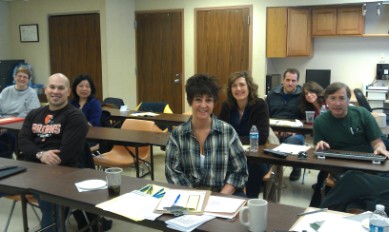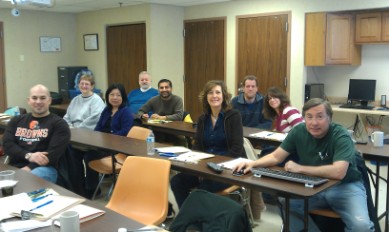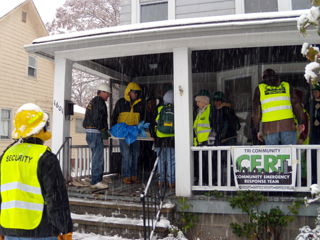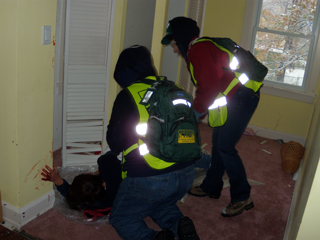On 1/28/12 members of the Tri Community CERT participated in a national pandemic response exercise.
 |  |
This was a simulation of the response process in the event CERT was deployed to assist with a pandemic, or if team members needed to assist their families, neighbors or community without an actual deployment. CERT training is helpful even if the team is not activated to respond to an event; what members learn can help them in many ways.
Photos of the training we conducted jointly with the Lyndhurst and South Euclid CERTs in 2010.
 |  |
We offer training classes throughout the year. Classes for new participants will be scheduled based on the number of new team members that register for our CERT. We hope to have a class by around September, 2011, but it will depend on how many residents enroll in CERT. We encourage you to check the "Contact Us" tab and apply for membership! And, please tell your friends, family and neighbors about this great opportunity to participate in an important community service.
Class schedules will be posted here.
Here is an overview of the classes that will be offered. All are free of charge.
The CERT training for community groups is usually delivered in 2 1/2 hour sessions, one evening a week over a 7-9 week period, or two evenings per week over a 3-4 week period. The training consists of the following:
· Session I, DISASTER PREPAREDNESS: Addresses hazards to which people are vulnerable in their community. Materials cover actions that participants and their families take before, during, and after a disaster. As the session progresses, the instructor begins to explore an expanded response role for civilians in that they should begin to consider themselves disaster workers. Since they will want to help their family members and neighbors, this training can help them operate in a safe and appropriate manner. The CERT concept and organization are discussed as well as applicable laws governing volunteers in that jurisdiction.
· Session II, DISASTER FIRE SUPPRESSION: Briefly covers fire chemistry, hazardous materials, fire hazards, and fire suppression strategies. However, the thrust of this session is the safe use of fire extinguishers, sizing up the situation, controlling utilities, and extinguishing a small fire.
· Session III, DISASTER MEDICAL OPERATIONS PART I: Participants practice diagnosing and treating airway obstruction, bleeding, and shock by using simple triage and rapid treatment techniques.
· Session IV, DISASTER MEDICAL OPERATIONS, PART II: Covers evaluating patients by doing a head to toe assessment, establishing a medical treatment area, performing basic first aid, and practicing in a safe and sanitary manner.
· Session V, LIGHT SEARCH AND RESCUE OPERATIONS: Participants learn about search and rescue planning, size-up, search techniques, rescue techniques, and most important, rescuer safety.
· Session VI. CERT ORGANIZATION: Covers organization, decision making, documentation, exercise methodology.
· Session VII, DISASTER PSYCHOLOGY AND TEAM ORGANIZATION: Covers signs and symptoms that might be experienced by the disaster victim and worker. It addresses CERT organization and management principles and the need for documentation.
· Session VIII. TERRORISM AND CERT: what is terrorism, targets, weapons, indicators, preparing at home and at work.
· Session IX, COURSE REVIEW AND DISASTER SIMULATION: Participants practice the skills that they have learned during the previous six sessions in disaster activity.
During each session participants are required to bring safety equipment (gloves, goggles, mask) and disaster supplies (bandages, flashlight, dressings) which will be used during the session. By doing this for each session, participants are building a disaster response kit of items that they will need during a disaster.